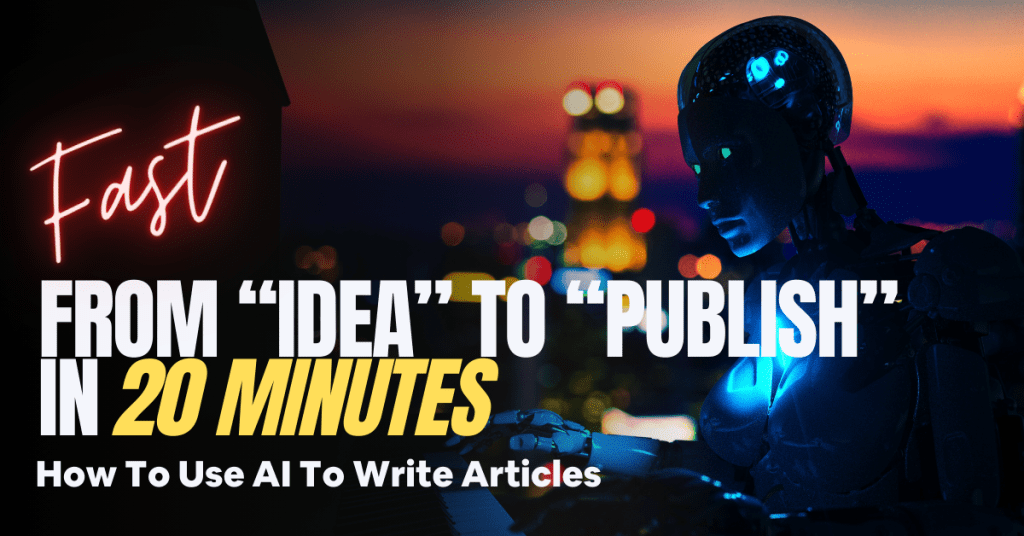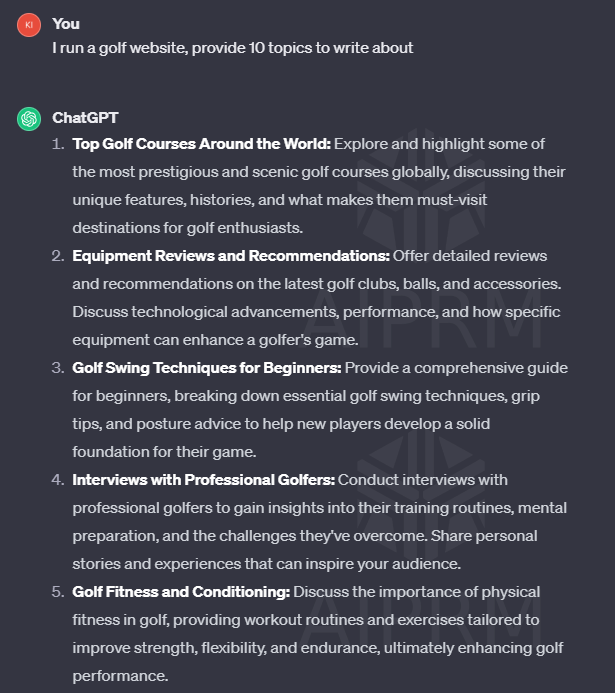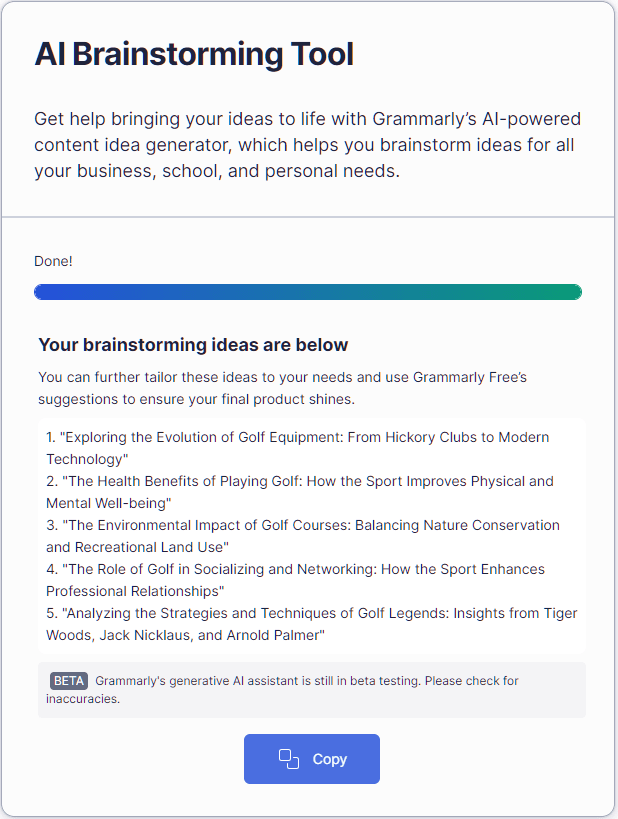
In this post, I’m going to show you how to use AI to write articles and basically go from “idea” to “publish” in less than 20-minutes, allowing you more time for other fun stuff.
If you’re like me, I struggle with coming up with fresh and engaging content on a regular basis.
I can literally spend 10-15 minutes (or sometimes longer) looking at a blank page and diagnose it as “writer’s block”.
But the question comes to mind.
Is there a way to streamline the writing process and generate high-quality articles in less time than it takes to cook a breakfast?
Well good sir or madam – there is!
Enter AI writing, and this guide will show you exactly how to do it.
In fact, this is how most content creators (not just writers) come up with their content.

📌 Editor’s Note:
Just a heads up, this guide’s intended for beginners and novices alike.
Although I’m going to show the exact steps on how to use AI to write articles, we’ll also be showing some “beginner-friendly” content such as the benefits and drawbacks of using AI writing, as well as common challenges and solutions.
Please skim through the Table of Contents to the section that applies to you and your goal.
Let’s get started!
What is AI Writing? | How To Use AI To Write Articles
In plain terms, AI writing involves using artificial intelligence (AI) tools to create written content – simple as that.
It’s as easy as typing a prompt and have it do the following:
- Write a short essay
- Draft a screenplay
- Write a script for Youtube
- Write a whole month’s worth of blog posts
- Write product descriptions for Amazon or Shopify
The possibilities are endless.
Most AI writers use fancy algorithms, like Machine Learning and Natural Language Processing, to produce results – if this sounds too “technical” it’s OK.
It basically means that these algorithms help imitate normal human writing.
Benefits and Drawback of AI Writing
Just like anything else in the world, there’s always a positive and negative side of things, or in this case, benefits and drawbacks.
AI writing is far from perfect. Even if you think the benefits of AI writing far outweigh the drawbacks, there’s still some crucial info you need to be aware of.
Especially if you’re learning how to use AI to write articles, being cognizant of these drawbacks will help mitigate some of the issues that most content creators face.
Benefits
If it isn’t obvious enough, the main benefit of using AI writers is that it can save time and effort.
Not too long ago I would spend at least a few hours researching a topic, then another few hours creating the outline and first draft – that’s almost four hours and the post wouldn’t even be published.
Now that entire process can be done in under an hour, or even publish it in under an hour!
📌 Editor’s Note:
Although I claimed you can do it in under 20-minutes, I suggest you should take some to edit and vet the information – more on this later.
Drawbacks
Although it’s pretty sweet to acquire “publish ready” content with a click of a button, AI writing is not a replacement for human writers.
I still think there needs to be a human component in this entire process.
AI still lacks the creativity and personality of an actual person. Just by reading some text, you can tell if it’s been written by a robot or a human. There’s nuances in how certain people write.
Additionally, since some AI companies are using data from early 2023, 2022, or even 2021, the content generated isn’t always accurate.
ChatGPT (one of the more popular options) only just announced it can “browse the internet to provide you with current and authoritative information…“. Prior to that, it was limited to data before September 2021.
Other AI tools can’t even access the internet to provide real-time data.
3 Step Process | How To Use AI To Write Articles
Step 1: Leverage AI to Research Topics
I know it can be a bit overwhelming to start, especially if you’re new to AI writing.
Being bombarded with new tools, new terms, and new technologies can cause “analysis paralysis” with some people.
But you’re in luck.
In this guide I’m not going to focus on the latest and greatest AI writing tool, instead I’m going to focus on the process, because regardless of the tool you use (they can differ and AI tools are changing by the day) the process will stay the same.
Brainstorm Topic Ideas
The first step in learning how to use AI to write articles, is brainstorming.
Just like any writing project, you’ll need to come up with some topic ideas. This is where AI tools can be particularly helpful.
Many AI writing tools have built-in “brainstorming” features that can help you generate ideas quickly.
Few things to note when using AI tools for brainstorming:
- Different tools use different terms such as Target Keyword, Prompt, Topic, etc. but they mean the same thing which is “provide an input to start the process”
- The results can be vastly different from one another because each tool can rely on a different set of data
For example, if my website is focused around golf and I don’t know what to write about, I can ask ChatGPT or Grammarly with the following:
ChatGPT: “I run a golf website, provide 10 topics to write about”

Grammarly: “I run a golf website, provide 10 topics to write about”

Two different tools, two different results.
The point of this exercise is provide you with a starting point and give you ideas of what you can potentially write about.
Once you’ve narrowed down a topic you’d like to pursue, you can refine it and dig deeper to find out more information.
Outline Main Topics
Once you narrowed it down to the topic you want to write about, it’s time to start outlining your article.
Outlining an article is the process of identifying and deciding the main sub-topics you want to cover, as well as, structuring the article in a way that’s easy to read.
Again, AI tools can be very helpful at this stage as some have built-in outlining features that can help you organize your thoughts and ideas.
Back to my golf example.
I’ve decided to write about “The Top Golf Courses in the World”.
I can continue my prompt with ChatGPT to provide a basic outline of sub-topics to cover regarding “The Top Golf Courses in the World”.
ChatGPT: “Generate a blog outline of the “Top Golf Courses Around the World”

ChatGPT provided me with an Introduction, as well as a list of the different golf courses and other relevant topics to cover within each heading.
Step 2: The Writing Process
The second step in learning how to use AI to write articles, is to start writing it.
As I mentioned in the research section, regardless of the AI tools you use, the process remains or similar. This is also true for the writing process.
I can even make an argument that writing an article manually (human-made) or using AI, involves the same principles:
- Create first draft
- Refine by adding, removing, or restructuring sub-topics
- Edit
- Optimize
There are some caveats though, which I’ll explain further down this section.
Creating the First Draft
The first step in writing an article, whether it’s done manually or with AI, is to generate a draft.
We start by selecting the right AI writing tool that suits our needs.
As I mentioned before, I won’t be bombarding you with with the latest and greatest AI tool.
I will note, however, that some tools are better suited for certain things such as brainstorming, creating an outline, and in this case, creating your first draft.
Because ChatGPT is the most recognizable AI tool in the market, especially for writing an article or blog post, I’ll be using it for our examples and continue with our Golf Topic “Top Golf Courses Around The World”.
Again, if you come across another tool that can write AI articles, use that.
Back to ChatGPT.
I can continue my prompt with ChatGPT to create an article based on the outline it provided.
ChatGPT: “Generate an article based on the outline provided above”

I didn’t screenshot the entire result but you can see it generated our first draft, which we can now review and edit.
Refining the AI Article
This is where we add our own voice and style to the article.
It’s important to note that the first draft generated isn’t perfect. Far from it!
In fact, it probably contains errors or it lacks coherence. That’s why we need to review and edit it thoroughly before publishing.
📌 Editor’s Note:
I’ve seen too many pages where people just post AI articles during this stage of the process, without doing any edits. It’s clear it’s been written by AI and some data was incorrect.
Don’t be lazy and follow this process to produce high quality AI content.
Now back to editing…
Here are some steps to follow to edit AI articles effectively:
Step-by-Step Editing
- Read Through the Article
- Start by reading through the entire article to get a sense of the overall flow and structure.
- Make any necessary adjustments to the organization and flow of the content. Restructure it if you have to.
- The point is to proofread the content, make it readable, and try to catch any mistakes.
- Add Personality
- While the article may be factually accurate, it will definitely lack personality and pizzazz.
- When reading through the article, drop some humor or change up sentences to match your voice and style.
- There are ways to change the article’s tone, but I won’t go through it here.
- Check for Accuracy
- As I mentioned, the database used by some of these tools may be outdated.
- Ensure that all the facts, figures, and information in the article are accurate.
- Verify any sources or citations that the AI used to generate the content.
- Eliminate Redundancy
- There’s a high probably that the article has some sort of duplicate content. Maybe not word-for-word, but rewritten enough to look different but it’s main point is still the same.
- Remove that type of information. It’s repetitive and useless.
- Check for Grammar and Spelling
- No brainer. Google doesn’t like grammar and spelling mistakes.
- To make this easier, I use Hemingway Editor because it provides a grade school readability score. I normally strive for a Grade 5-7.
- Use a grammar and spell-checking tool to ensure that the article is free of errors. Correct any mistakes that the tool identifies.
- Review and Edit Multiple Times
- Review and edit the article multiple times to ensure that it’s polished and error-free.
- Get feedback from other people if you have to. It’ll ensure that the article is clear and understandable.
- I usually go through the article 3-4 times. Twice to edit (following the process above), and another 2 times to ensure it’s SEO optimized.
Following these steps allows you to refine the article and ensure it’s high-quality and meets our intended purpose.
Enhancing the Quality of the AI Article
After editing the AI-generated content, it’s at a point where it can be ready to publish, but I don’t recommend it.
We may be missing out on some key pieces of information.
Let me explain.
Purpose and our Target Audience
During the editing/refining stage, you may notice some gaps of information or some topics need more content to get the point across.
Additionally, the AI-generated content might not be providing all the information for our target audience.
This is where we can add additional information for our users.
Back to ChatGPT and our “Top Golf Courses Around the World” topic.
If you noticed the content so far, it highlights all the top golf courses in the world with some additional information:
- The history of the golf course or it’s historical importance
- Iconic features
- Major tournaments it’s featured on
All great topics to highlight but if our intended audience are beginner-amateur golfers that want to play at these locations, they might want more relevant information that pertains to their query instead of the history of the course.
With this in mind, I can continue my prompt with ChatGPT and ask for more relevant information such as price and best times to travel.
ChatGPT: “With each golf course, include the price and best times to travel”


Now we just enhanced our content by providing the type of information our readers want. This will make it far more relevant and it’ll keep them engaged throughout the article.
Fact Check
One of the caveats of AI-generate content is that you always have to fact check the information.
Anytime you add something new, it’s essential to fact-check your content.
For our Golf example above, a quick Google search or directly going to the “St. Andrew’s Golf Course” website and reviewing the price, shows that the AI content wasn’t accurate:

The price actually ranges from £150 – £320. Slightly different from what ChatGPT indicated, which was £100 and £250.
Obviously this is a minor correction but let’s say you’re writing about medical or health stats, you definitely want to ensure you’re data is accurate.
Step 3: Optimizing AI Articles for SEO
The third step in learning how to use AI to write articles is to optimize it for search engines such as Google, Bing, etc.
Personally, I think Search Engine Optimization (SEO) is one of the most important aspects for anyone wanting to have their article/blog post read on the internet.
It’s the process of optimizing your content (which I’ll explain below) so it reaches the right audience, with the right intention, while ranking on Google, Bing, and any other search engine.
It’s important to note that this SEO process is meant for writers and content creators that want to rank higher on popular search engines.
I understand that some writers may not be using AI writing for online articles, but instead using AI writing to create a book or develop a marketing presentation at work. If that’s the case, this step can be skipped.
Here are some ways we can optimize our AI article for SEO.
Keyword Research
One of the main pillars of SEO is Keyword Research.
It’s the process of identifying the right keywords and phrases that our target audience is searching for and incorporate them into our articles.
Fortunately for us, there are tools, like Ahrefs, that can help us with this task by analyzing search data, identifying the right keywords, and even suggesting relevant keywords.
Using our “Top Golf Courses Around The World” example, here are the results from Ahrefs:

Luckily for us, there’s decent volume (meaning there are people searching for this term) and the difficulty isn’t too hard (meaning ranking for this term is relatively easy).
📌 Editor’s Note:
If you’re a writer or content creator that’s publishing for the internet and wanting to have your article/blog post read, then this process typically happens during the topic research phase and definitely before the writing phase.
Optimize for SEO
Once we identified our target keyword (in this case “Top Golf Courses Around The World”), we need to optimize our AI article for SEO.
Here are some tips on how we can do that:
- Use the target keyword in the title and meta description of the article
- Include the target keyword in the first paragraph of the article
- Use headers and subheaders to break up the content and include the target keyword in them
- Use internal and external links to other relevant content
- Optimize images by including alt tags with the target keyword
These are foundational SEO practices that should be followed with any article.
This doesn’t guarantee that we’ll start ranking for this keyword immediately, there are other SEO tasks that need to be done (such as backlinking), but this is a good place to start.
Using AI Responsibly | How To Use AI To Write Articles
Insert wise Uncle Ben quote, “With great power, comes great responsibility”.
Classic Uncle Ben.
Who knew his quote would be referenced with AI writing? But it needs to be mentioned.
Using AI technology, or any technology for that matter, comes with ethical considerations that you have to take into account.
With AI writing in particular, here are some things to keep in mind:
Bias
Like any technology, AI is only as good as the data it has and data, at it’s core, is just data. An unbiased set of numbers, words, and dates stringed together to form something.
It’s how we use this data that makes in meaningful.
We have to be careful of our own biases and how we present this data in our articles because it will affect how our readers respond to it.
Take for instance the news. A simple car crash can be interpreted very differently depending on the broadcasting company (think CNN vs Fox).
Plagiarism
As you can probably tell, AI can be used for a variety of use cases.
It can be used to detect and treat cancer in healthcare.
It can be used to provide market analysis for businesses.
Particularly for writers, it can be used to do the bulk of the research for their topic.
In fact this article alone was used to do some basic brainstorming and content – not all, but some.
It can be even used to detect plagiarism.
And if it can be used to detect plagiarism, it can also be used to produce plagiarized content.
We must ensure that the content produced by whatever AI tool you use, is original and not copied from other sources.
That’s why I implore you to go over the article multiple times, not only for grammatical errors, but ensure that the content isn’t plagiarized.
Accountability
Lastly, have to be accountable for the content produced by AI tools.
While AI can generate the text we prompt it to, it’s ultimately up to us to ensure that it is accurate, ethical, and meets our standards for our readers.
We have to take responsibility for any errors or inaccuracies in the content and be willing to make corrections if necessary.
By keeping these ethical considerations in mind, we can use AI to write articles responsibly and ethically.
3 Common Challenges and Solutions with AI Articles | How To Use AI To Write Articles
When learning how to use AI to write articles, it’s not all sunshine and rainbows.
As I mentioned before, there’s always a “positive and negative” side of things. In this case, “challenges and solutions” to AI-generated articles.
Now I’ve already mentioned the benefits.
Here are some drawbacks and challenges associated with using AI to write:
1. Lack of Creativity and Originality
Challenge
One of the most significant challenges of AI-generated articles is that they can lack creativity and originality.
Think about it.
As of now, AI tools are pulling data from the past. It’s retrieving data that’s already happened.
Not only can this result in content that is repetitive and unengaging, but also unoriginal and creative.
Solution
One solution is to use a human writer to flesh out ideas into a more creative and engaging piece of content or have someone prompt, decipher, and extract the data in an original and creative way.
2. Lack of Accuracy
Challenge
Another challenge of using AI to write articles is that the content can sometimes be inaccurate. This is mainly due to the data that’s being fed into the AI system.
Some systems have access to real-time information, while others are lagging behind producing content based on a data source a few years behind.
Depending on your article, this can be a good or bad thing.
For example, if you’re writing about things that happened prior to 2021 (or whenever the AI database was last updated), such as the Moon Landing or even the Roman Empire, then the chances are that AI produce fairly accurate and factual results.
On the other hand, if you’re writing about recent topics, such as the Palestine vs Israel war (as of writing this article, this was the most recent world topic), then you’ll need to access an AI system that has the most up-to-date, even real-time, information.
Solution
To address this issue, it’s essential to fact-check the information by a human editor.
This ensure that the article being published is accurate, up-to-date, and can also catch any grammatical errors.
3. Maintaining Consistency
Challenge
Maintaining consistency throughout an AI-generated article, in regards to tone and style, can be a challenge, especially if you use multiple AI systems to generate and refine the content.
Solution
There are a few solutions to maintain consistency.
First, you can direct the AI system to use a specific tone and point of view (first, second, or third). You can even set clear guidelines on how to style the article.
But if you’re using multiple AI systems, you need to ensure the tone, point of view, and style are consistent throughout all the systems.
Another solution, again, is to use a human editor to review the content and make sure all those attributes (tone, style, point of view) are consistent.
Conclusion | How To Use AI To Write Articles
So now you know the basics of how to use AI to write articles. I hope it provided you with actionable insights, but understand this is just a primer.
There’s a lot that goes into AI writing, especially if you’re using AI to write more elaborate pieces.
Ultimately, AI tools can help save you time and effort, and can even produce high-quality content, but I personally think we’re not at that stage where we can ask AI to write and publish an article with a simple click of a button.
There still needs to be human engagement throughout the process.
Good luck!
Before You Go…
It’s one thing to learn how to use AI to write articles, it’s another thing completely to find the right AI writing tool.
That’s why I created an a buying guide which explores 14 “mission critical” features your AI tool must have, or you’re doomed to fail…
14 “Mission Critical” Features You Need – AI Writing Tool Buying Guide
Another piece of the process is finding low competition keywords. Check out our guide on how to find the “holy grail” of keywords using AI…
Hack the SERPs using AI Keyword Research
Additionally there are other ways to use AI for automation, not just writing articles…
Here are 7 “Automation Areas” where you can automate your business.